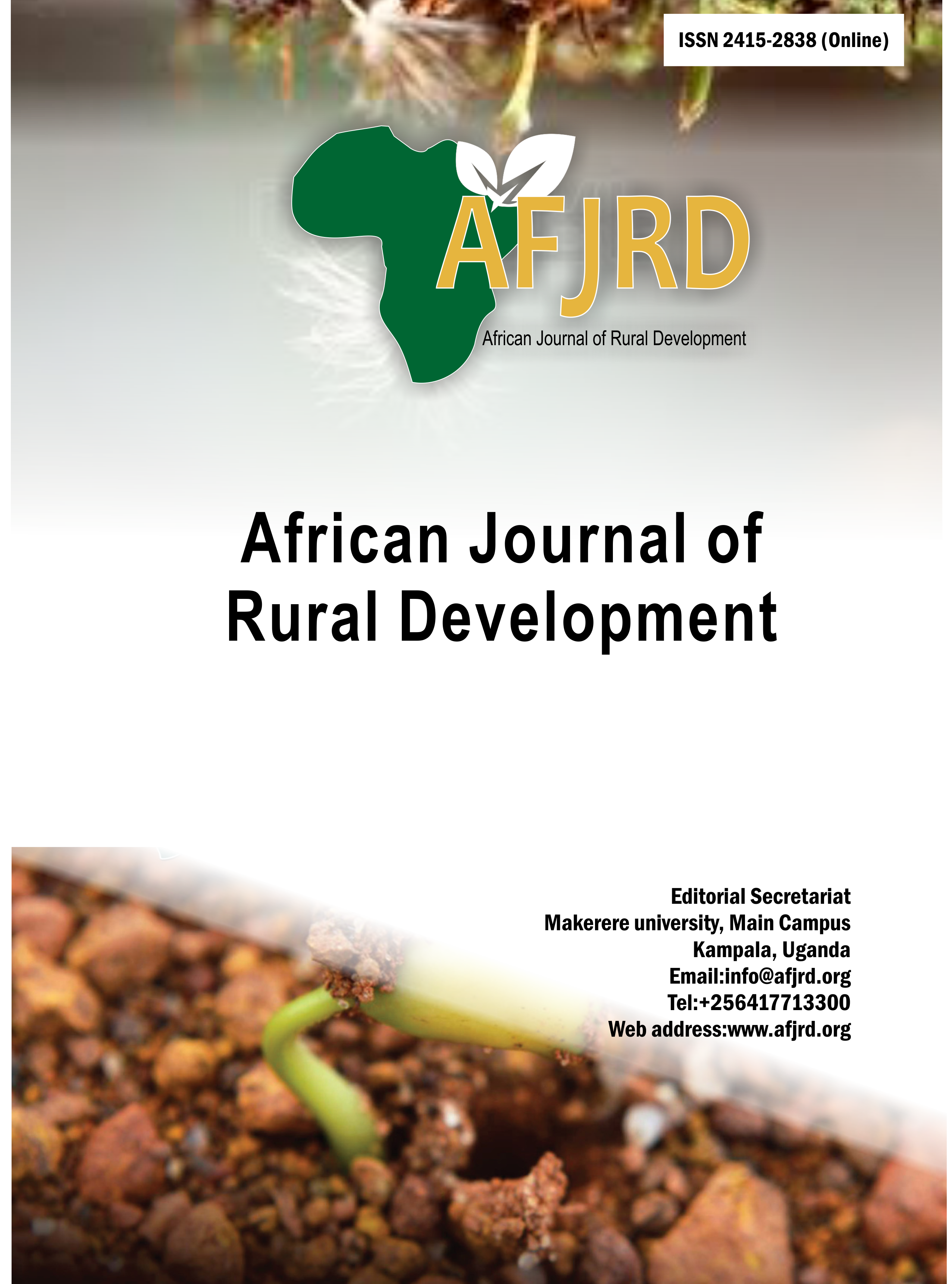Characterisation of Rice Blast Resistant Genes and Combining Ability in Ugandan Local Commercial Disease Resistant Varieties
Main Article Content
Abstract
Rice blast disease caused by Magnaporthe oryzae is one of the most serious diseases that affect rice production in Uganda. Local commercial varieties of rice NamChe2 and NERICA 15 have shown broad-spectrum resistance to M. oryzae in Uganda; however, the underlying genes responsible are not known. Seven resistant genotypes, including two monogenic differential lines (WH13-3260(Pi7t) and WH13-3203(Pi54)) and five local commercial resistant varieties (NamChe2, NERICA15, NERICA6, NERICA4, and IR64) were crossed in a half diallel mating design to generate F1 resistant x resistant crosses. The 16 F2 populations were planted in RCBD of two replications with 50 plants per replication per cross. 100F2 plants were evaluated 28DAI. plants with scores of 0-3 were resistant while those with higher scores were susceptible. Means of the evaluated plants were used to analyze for combing ability. Resistance among the tested resistant genotypes is controlled more by non-additive effects with a low narrow sense coefficient of genetic determination (0.19), low Baker’s ratio (0.22) and high broad sense coefficient of genetic determination (0.89). Genotypes IR64, WH13-3260 and NamChe2 were good combiners for resistance to blast disease and therefore can be utilized for improvement of other locally adapted varieties for resistance to rice blast disease. The cross of NamChe2 x WH13-3203(Pi54) did not segregate giving a ratio of 1:0 (R: S) indicating that NamChe2 carries an allele of the gene Pi54. This study sets a basis for the efficient utilization of the local resistant variety NamChe2 as a source of resistance to rice blast disease. .
Article Details

This work is licensed under a Creative Commons Attribution 4.0 International License.
